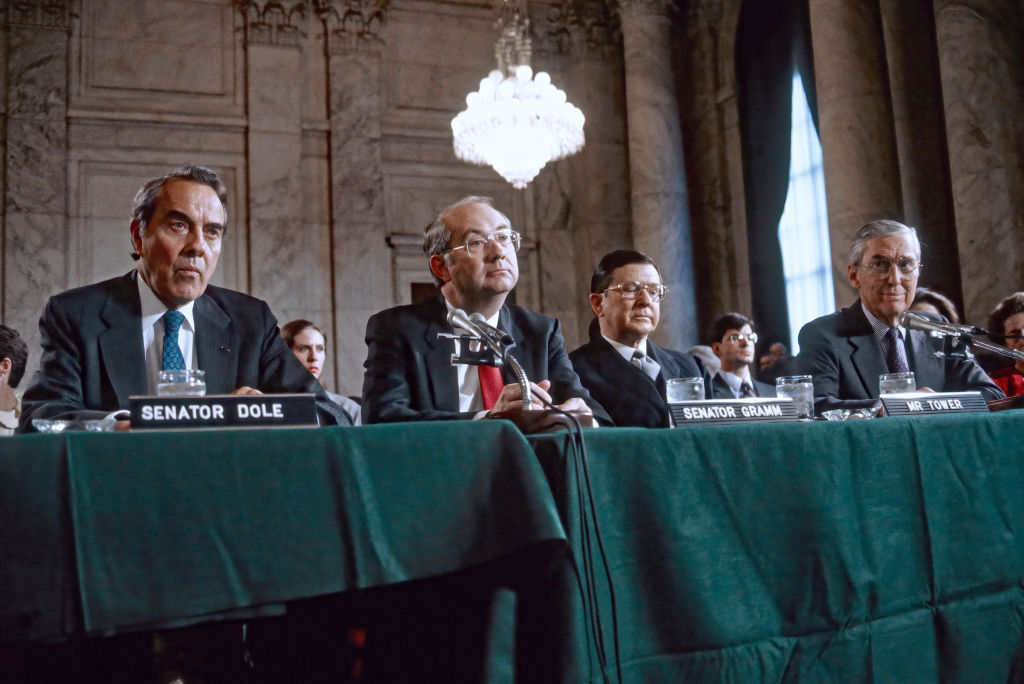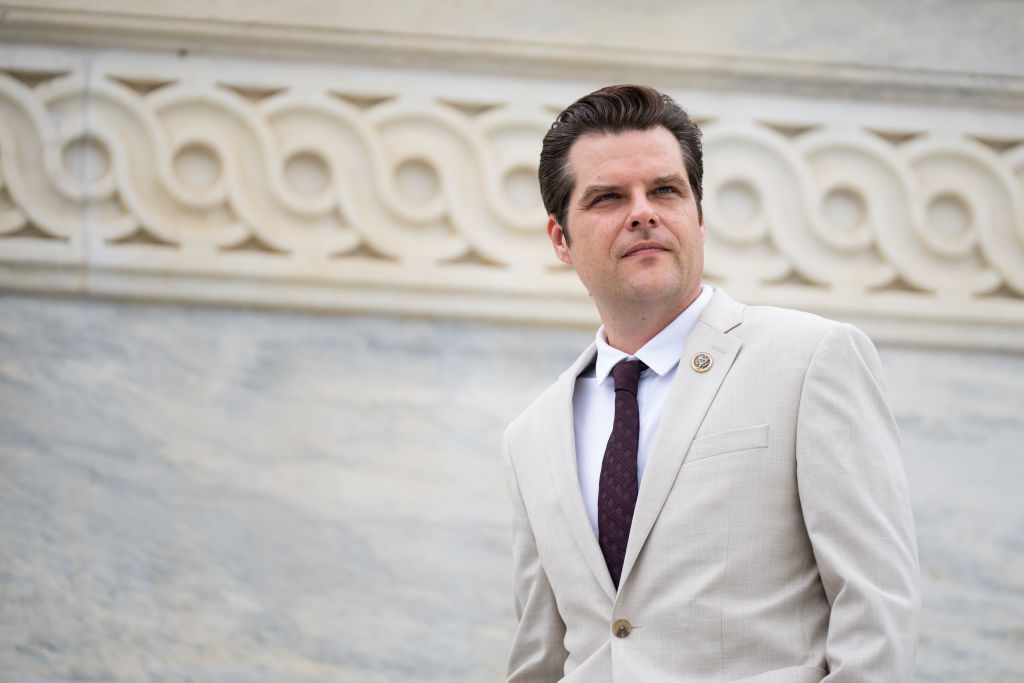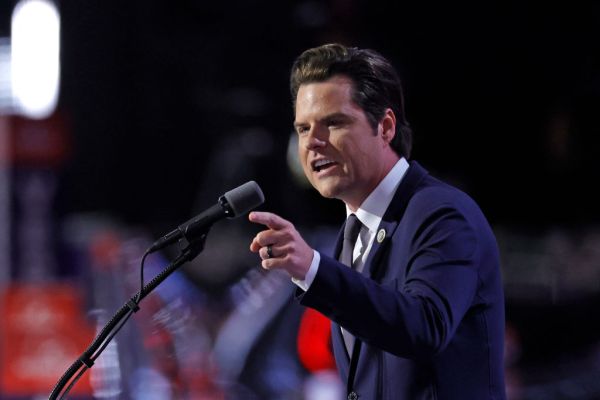While the president decides whom to choose for the senior roles in his administration, there’s no getting around the Senate’s role in confirming Cabinet nominees, as President-elect Donald Trump and his now-former choice for attorney general, Matt Gaetz, have learned.
The president, according to Article II of the Constitution, is in charge of the executive branch, and that means choosing who serves in senior posts. Although inside-the-White House staffing decisions are the president’s alone (for instance chief of staff, domestic policy adviser), the president must share a bit of the appointment power with others in two primary categories.
The first includes some independent agencies and “inferior” offices where, through law, Congress can give others appointment power and/or limit the president’s power to select or remove. The better-known category includes the most senior executive branch officers, who require confirmation by the Senate. This is found explicitly in the Constitution’s text, but it is also central to the concept of separated powers. Preventing the concentration of authority and fostering competition among branches protects us from tyranny. This idea is so important that it’s understood to be essential to the “republican form of government,” which the Constitution guarantees to every state. Indeed, state governments have the same separation of powers and the same type of appointment and confirmation process (i.e., a governor appoints and a state Senate confirms).
The Senate’s decision on confirmations, just like on impeachment convictions, is a matter of judgment. Each senator uses his or her own formula to decide whether to approve a selection. This calculation ought to include a determination of whether a candidate is professionally qualified and temperamentally and ethically fit for the role. But other possible considerations include general deference to the president, partisanship, geography, and policy preferences.
One way to think about the Senate’s role is to remember that the Constitution says little about the components of the executive branch. It doesn’t have a comprehensive list of departments or officers. Those are primarily determined by legislation. And since Congress decides which executive branch entities will exist, what powers they will have, and which top offices will be in those entities (and since Congress appropriates funds for all of this), Congress has a role in assessing the fitness of high-ranking officials.
How the process works.
We can think of five steps in the process. The first is done mostly out of sight, though it’s arguably the most important. The president identifies someone for a position and determines whether that person is aligned with the administration on philosophy and policy. This step also includes vetting, an assessment of whether the candidate has written, said, or done things that might be deemed disqualifying; whether the candidate is experienced, knowledgeable, and ethical enough to do the job; and whether the candidate is acceptable to the Senate. Vetting generally includes financial disclosures, examinations of potential conflicts of interest, and occasionally FBI investigations. This work is often shepherded by those inside an incoming administration’s transition team or a sitting administration’s presidential personnel office. The other steps in the process will flow smoothly if the president’s team has taken this step seriously. It is generally seen as a great embarrassment—a poor reflection of the administration’s competence—if individuals later deemed unfit make it through this step.
The second step is the official nomination. This, of course, means sending the right paperwork to the Senate, but it also includes matters of protocol such as making personal contact with senators and supplying supporting materials to their staffs. As with the first step, doing this well avoids hiccups down the line.
The third step—the committee process—is make-or-break. The nomination is almost always handled by a committee with primary jurisdiction over the nominee’s prospective role (e.g. Finance for the treasury secretary, Judiciary for the attorney general, and Armed Services for the defense secretary). Senators and staff review submitted materials and independently look into the nominee’s background. This leads to a hearing and, in most cases, the committee vote.
The hearing and vote are obviously public and high-stakes, but they need not be full of surprises. Based on prior conversations with senators and staff, the administration and nominees have a sense of what will be asked and how the vote will go. If a senator has questions or concerns, those can be addressed before and during the public process. If the prior steps were handled well, this phase should present minimal drama. Indeed, in most cases—for instance, assistant secretaries, general counsels, and other lower-profile positions—if a candidate succeeds in the committee process, approval by the full Senate is very likely. If the committee decides to proceed with the nomination, it can report the nomination favorably (signifying majority support) or unfavorably. It can also report it without recommendation, which can signify that a majority is opposed to the nomination but agrees to have full Senate consideration.
Two caveats: Smooth sailing can become choppy waters if something is discovered during the committee process—for example, a criminal prosecution or a controversial speech. If the discovery is sufficiently troubling, a nominee may withdraw, voluntarily or with the encouragement of the administration. Second, even if the administration and nominee have carefully followed the process, opponents may surprise the nominee with new allegations during the public hearing. This too can lead to a withdrawal, or the administration may press on.
The fourth step is the floor vote. Assuming no procedural obstacles, a nomination moves to the full Senate after the committee’s favorable report. In many cases, especially in years past and especially for less prominent positions, a strong, favorable vote in committee means little organized opposition on the floor. A close vote in committee and/or a high-profile position may, however, lead to significant, contentious floor debate.
Lastly, if the nominee is approved by the full Senate, he or she receives a commission, is sworn in, and begins work.
When things go wrong.
We will never know how many potential candidates were scuttled prior to nomination. But it would be hard to overestimate the number. Administrations consider countless individuals for high-level roles; their tax returns are scrutinized, their writings are studied, they undergo background checks. Many don’t make it through this process because the administration concludes that the nominee would not win Senate confirmation. Sometimes, it is never even made public that they were under consideration; sometimes, their names are announced but withdrawn prior to official nomination. In both cases, while these candidates were never technically nominated, the nomination process weeded them out.
Gaetz’s withdrawal as Trump’s choice for attorney general is a prime example. Another is Susan Rice, who was evidently President Barack Obama’s choice for secretary of state. Senate opposition mobilized, however, and she was placed instead as national security adviser, a position that does not require Senate confirmation. The Senate lists 27 examples of Cabinet selections faltering post-nomination. In some cases, a nomination is withdrawn.

President Joe Biden’s nomination of Neera Tanden for Office of Management and Budget director was pulled back, as were Trump’s first-term nominations of Andrew Puzder, Chad Wolf, and Ronny Jackson; Obama’s nominations of Bill Richardson and Tom Daschle; and George W. Bush’s nominations of Linda Chavez and Bernie Kerik. In rare instances, the full Senate votes to reject a nomination. This occurred with John Tower (George H.W. Bush’s selection for secretary of defense in 1989) and Roger Taney (Andrew Jackson’s selection for secretary of the treasury in 1834). These are in addition to withdrawn or rejected judicial nominees, like George Carswell in 1970, Robert Bork in 1987, and Harriet Miers in 2005.
What about recess appointments?
Presidents are empowered to temporarily install individuals in key positions if the vacancy occurs while the Senate is in recess (in these cases, the appointment expires at the end of the following session). Such recess appointments were more common generations ago when Congress could be out of session for long stretches (and unable to reconvene swiftly because of travel challenges). Recess appointments have generally been used in recent years only for lower level (non-Cabinet) positions.
This recess authority has been seen as enabling the federal government to function in a way that both respects the president’s appointment power and the Senate’s confirmation authority. A president could press the Senate to adjourn so he could install senior officials without the confirmation process. Similarly, a constitutional provision allows the president to force an adjournment if the House and Senate disagree about when to be in session. In this way, a president and the House could, conceivably, collude to enable the appointment of high-ranking officials without Senate confirmation. But such maneuvers would violate the spirit of the Constitution by striking at the separation of powers and one of Congress’s essential duties.










Please note that we at The Dispatch hold ourselves, our work, and our commenters to a higher standard than other places on the internet. We welcome comments that foster genuine debate or discussion—including comments critical of us or our work—but responses that include ad hominem attacks on fellow Dispatch members or are intended to stoke fear and anger may be moderated.
With your membership, you only have the ability to comment on The Morning Dispatch articles. Consider upgrading to join the conversation everywhere.